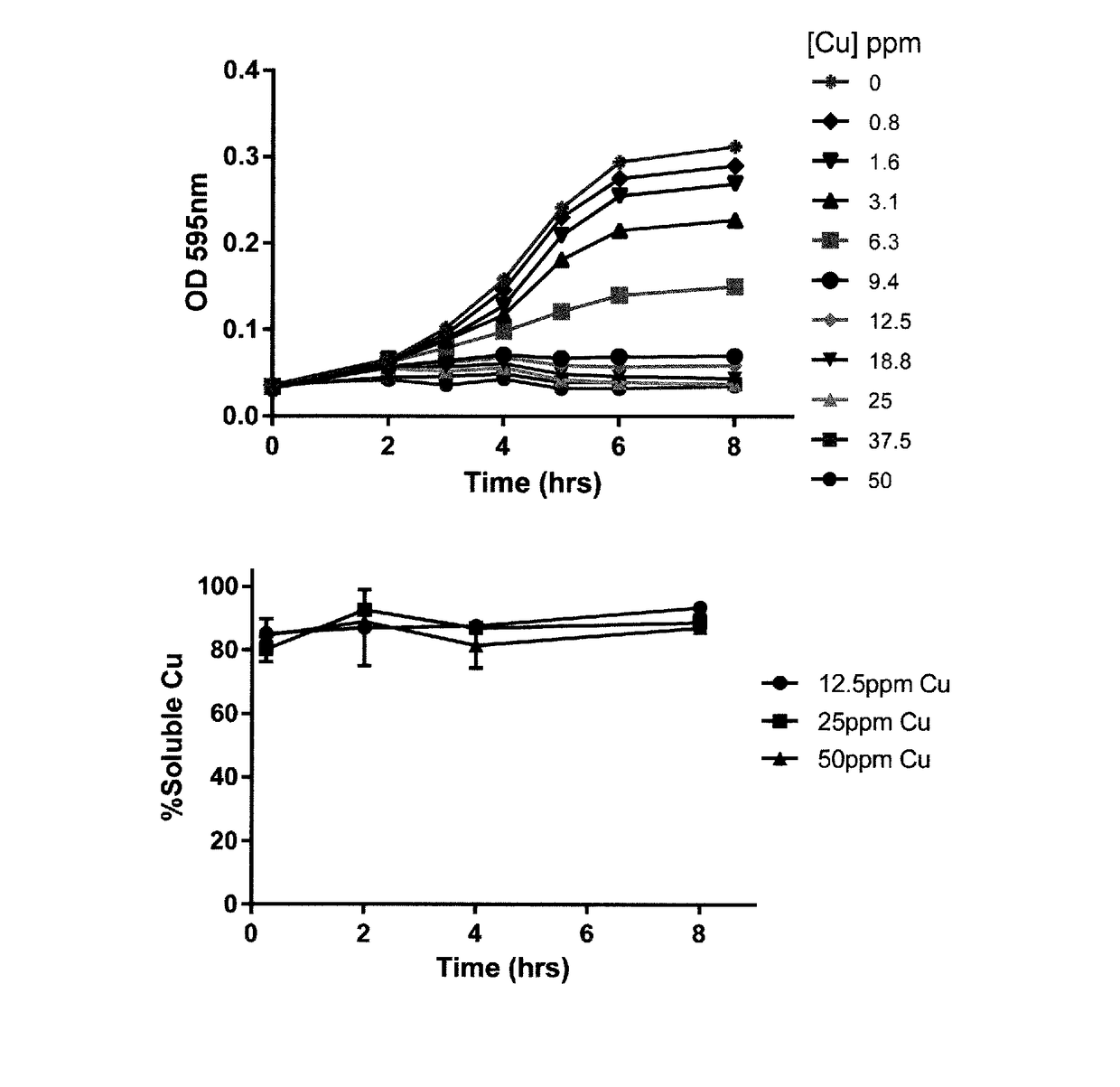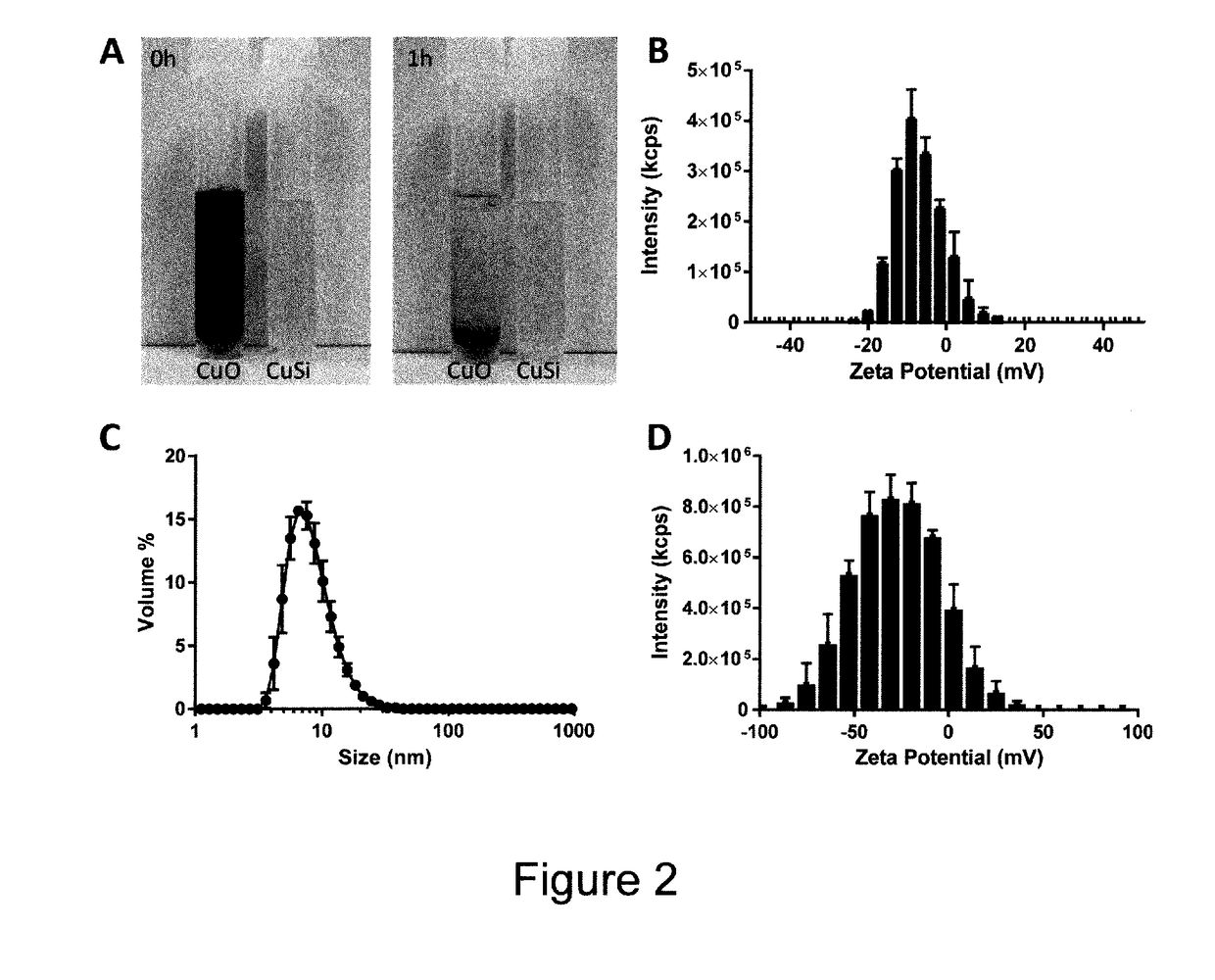Antibacterial Compositions Comprising Copper Oxo-Hydroxide Nanoparticles and Their Uses as Biocidal Agents
- Summary
- Abstract
- Description
- Claims
- Application Information
AI Technical Summary
Benefits of technology
Problems solved by technology
Method used
Image
Examples
experimental examples
[0094]All experiments were carried out using ultra high pure (UHP) water (distilled deionised water; 18.2 ΩM / cm), and at room temperature (20±2° C.), unless otherwise stated.
[0095]1.1 Synthesis and Preparation of Copper Materials
[0096]1.1.1 Copper Chloride Stock Solution
[0097]CuCl2.2H2O was dissolved in UHP water to produce a concentrated stock at 40 mM (2542 ppm Cu), which was used in subsequent assays.
[0098]1.1.2 CuO Nanoparticles
[0099]Commercial CuO nanoparticles were obtained from Sigma-Aldrich (544868) and used as received and used for comparison with the antibacterial compositions of the present invention. Stock suspensions were prepared by dispersing the nanopowders in UHP water at 20 mM (1270 ppm Cu).
[0100]1.1.3 Silicate-Stabilised Copper Hydroxide Nanoparticles (CuSi NPs)
[0101]CuSi nanoparticles were prepared for comparative purposes by mixing a 400 mM sodium silicate solution at ca. pH 12, with a copper chloride solution (40 mM Cu), in a volume ratio of 1:1. The resulting ...
PUM
| Property | Measurement | Unit |
|---|---|---|
| Diameter | aaaaa | aaaaa |
| Diameter | aaaaa | aaaaa |
| Diameter | aaaaa | aaaaa |
Abstract
Description
Claims
Application Information
 Login to View More
Login to View More - R&D
- Intellectual Property
- Life Sciences
- Materials
- Tech Scout
- Unparalleled Data Quality
- Higher Quality Content
- 60% Fewer Hallucinations
Browse by: Latest US Patents, China's latest patents, Technical Efficacy Thesaurus, Application Domain, Technology Topic, Popular Technical Reports.
© 2025 PatSnap. All rights reserved.Legal|Privacy policy|Modern Slavery Act Transparency Statement|Sitemap|About US| Contact US: help@patsnap.com



